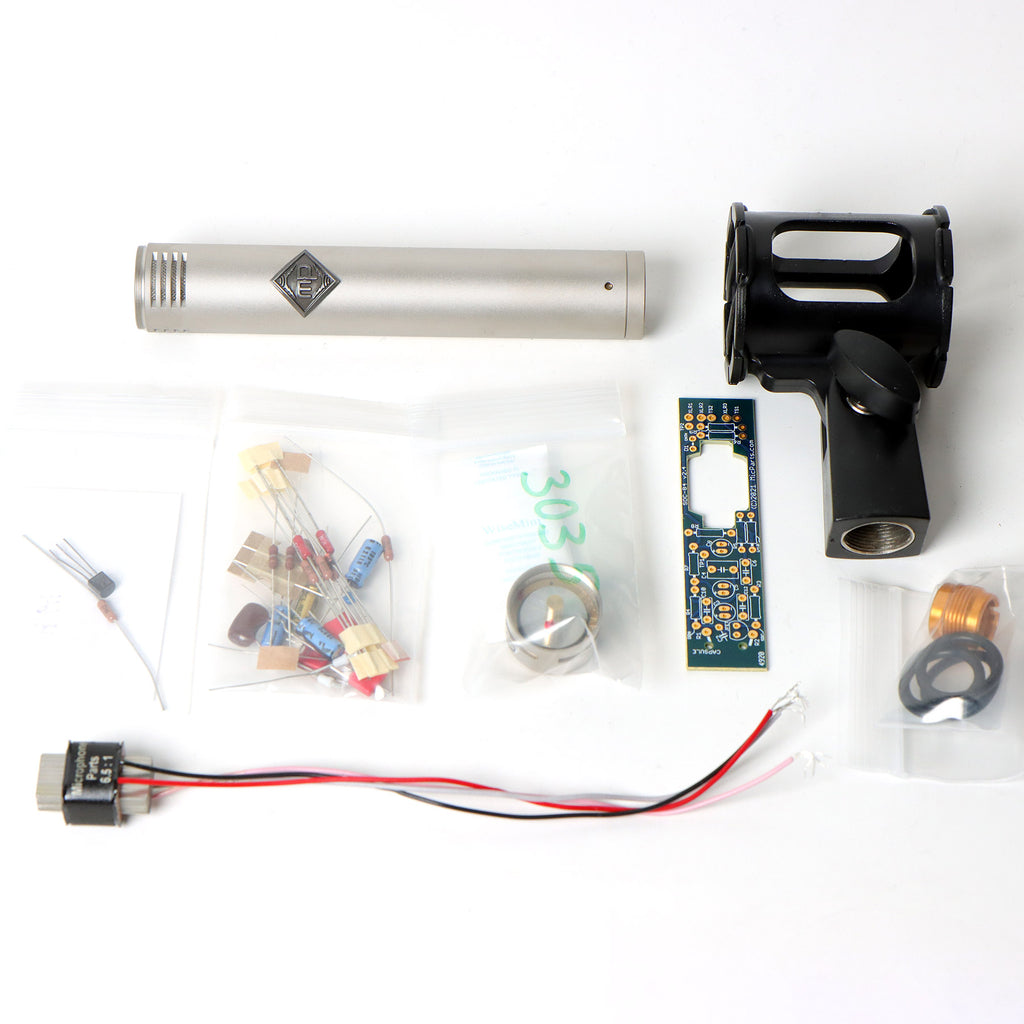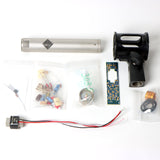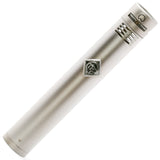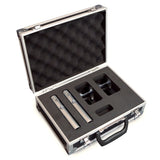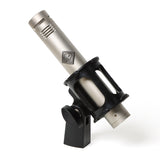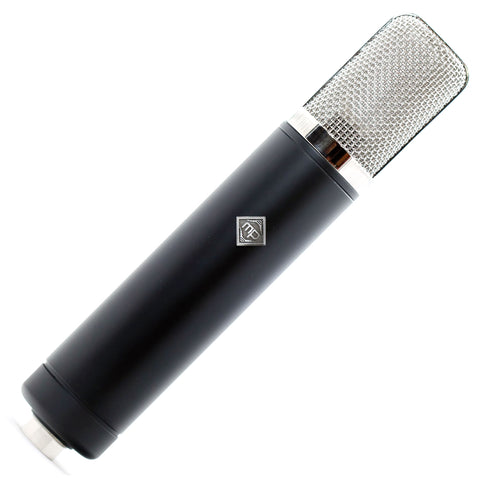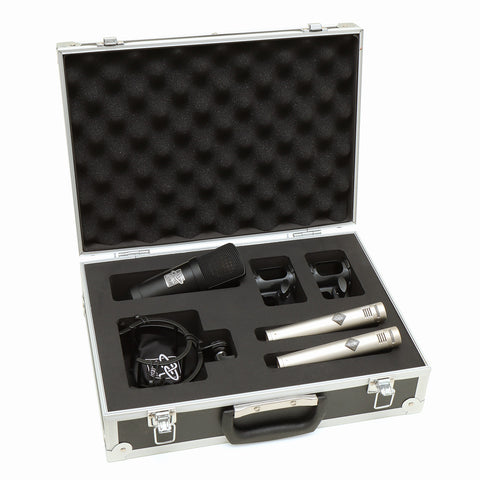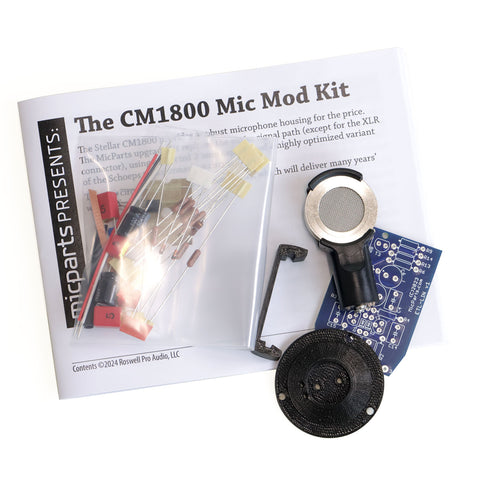SDC-84 Microphone Kit - Neumann KM84 Style
$ 379.00
All SDC kit orders are backordered. We will have limited availability during the week of Dec 29, with full inventory available by Feb 2.
This page describes the DIY kit version of our best-selling SDC-84 pencil condenser microphone. If you do not wish to build it yourself, you can purchase a pre-built and tested microphone directly from us:
Fantastic on acoustic guitar
Notable session guitarists David Grissom, Tim Pierce, and Blues Saraceno have been using the MicParts SDC-84 on acoustic guitar. That should tell you that this mic is difficult to beat for that source.
SDC-84 history and inspiration
The Neumann KM 84 is one of the most popular small-diaphragm microphones in history. We have cloned and upgraded its circuit, and developed a capsule that recreates the sound of the original—within 1dB from 80Hz to 20kHz:
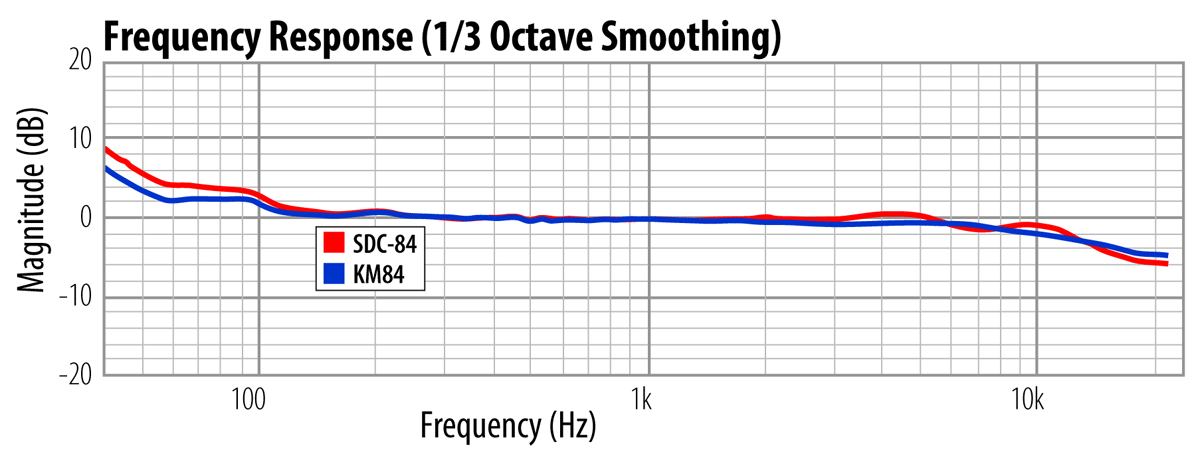
Our capsule is a bit more open at 10kHz than Neumann's, but much closer to the original KM 84 than is Neumann's current production KM 84 replacement, the KM 184 (aka "TLM-184"), whose +2dB presence peak from 7k–12kHz has ensured that vintage KM 84s remain highly sought after (and highly priced). Said another way, engineers strongly prefer the more neutral voicing of the original mic, so that's what we recreated.
What's in the box
This is a DIY microphone kit; it requires soldering, wiring, and assembly. If you'd like to buy a finished microphone, order the stereo pair here, or order the single mic here.
The DIY kit includes the capsule of your choice (cardioid, hyper, or omni), complete metalwork, our custom KM84 circuit board, and all the components needed to build the mic. The build manual is a 32-page book with color photographs and step-by-step instructions; it draws on nearly 10 years' experience making the best assembly guides in the DIY industry (according to our customers).
Single mic kits include a shockmount. Stereo kits include two shockmounts and a flight case.
Testimonials
"Four of us spent 10 hours auditioning them. We agreed that we liked them BETTER than our last encounter with actual KM84s. The SDC-84s have a smoother, sweeter top and minimal proximity effect. They are better than the real deal!"
- Mark McQuilken, FMR Audio
"Although it's not intended as a direct clone, the SDC-84 gets as close to the [KM84] sound as anything else I've tried."
- Sam Ingles, Sound On Sound Magazine
"I have a Neumann KM184 [$1595/pr] and a Soyuz 013 [$1399/pr]… Never used them again since I got a matched pair of these."
- Camilo Velandia (700+ song credits, two Latin Grammy awards)
"The sound is incredible! Using this mic with an LA-610, the mic sounds incredibly warm like what I would expect from a KM54 or similar SDC tube mic. A lot of detail but a gentle roll off at 10K makes the mic have very useful detail without too much high end extension that would make it sound more tinny. I think the transformer is what gives it the thick, tube like sound. I have been favoring mics with built in transformers lately and have been more appreciative of what nice color good transformers add to mics and preamps.
"I have previous experience with modded [brand redacted] mics which are also trying to go for a KM84 sound. I think this kit produces a much higher quality mic than even the most tricked out [redacted] which is around the same price as the kit. Ultimately I sold the [redacted] because I always preferred a bigger LDC sound for vocals or overheads. Now that I have this mic I think my problem wasn’t with the small diaphragm of the [redacted] but the small sound it had. I can’t say enough good things about the sound!
"From initial tests I think it may become my vocal mic - I’ve been through a lot of mics trying to get the right sound. Warm and intimate, detailed but not too bright. Probably kills on overheads but I’d need to get another one for that!"
Capsule Options
Choose Cardioid, Hypercardioid, or Omni. If you're not sure what you need, choose Cardioid, which is the most popular and most commonly used.
The Hypercardioid capsules have 5dB better rejection at 90 degrees than Cardioid. Hypercardioid capsules also have slightly darker top end, and higher bass response than Cardioid.
About stereo pairs and matching
If you purchase a single microphone kit, we cannot supply a match for it later. Customers interested in a matched pair should purchase the matched pair.
Drum Overhead Demo
Hat tip to Charlie Waymire for making this unsolicited testimonial / demo video!
About the circuit
We understand the KM84 circuit intimately, because we've been using it for years.
This implementation employs a NOS JFET that is manually and individually biased for this circuit, using a signal injector and distortion meter. The JFET, and more specifically its operating points, are critical to creating the desired sonic character of this circuit.
There are exactly two capacitors in the audio signal path: a NOS silver mica input coupling capacitor, and a German-made film output capacitor. Both types are audiophile favorites, known for their wide bandwidth and clarity.
We use a custom-wound BV8 style transformer, made in the US, for this kit; it outperforms most other transformers of this size, and delivers a sound that has earned hundreds of 5-star reviews for our LDC kits.
The circuit kit includes an optional feedback/pad capacitor. Leave it out if you mostly record quiet sources (acoustic guitar or strings, for example). Install it to increase the mic's headroom for recording moderate to high SPL sources such as drum overheads.
If you are looking for a snare drum mic, see our High SPL implementation of this circuit, which uses several different components, including a higher-turns-ratio output transformer: SDC-84 Snare Mic.
Sensitivity
If the SDC-84's optional feedback cap is omitted, the mic will have its highest possible sensitivity: 17-20mV/Pa.
Measured on the same scale, our two vintage KM84i mics, with pads off, measure ~15dB lower, or approximately 5mV/Pa. Said another way: the SDC-84, with feedback capacitor omitted, has 15dB higher output than the vintage KM84i.
The DIY kit includes an optional feedback capacitor that provides approximately 10dB of attenuation.

